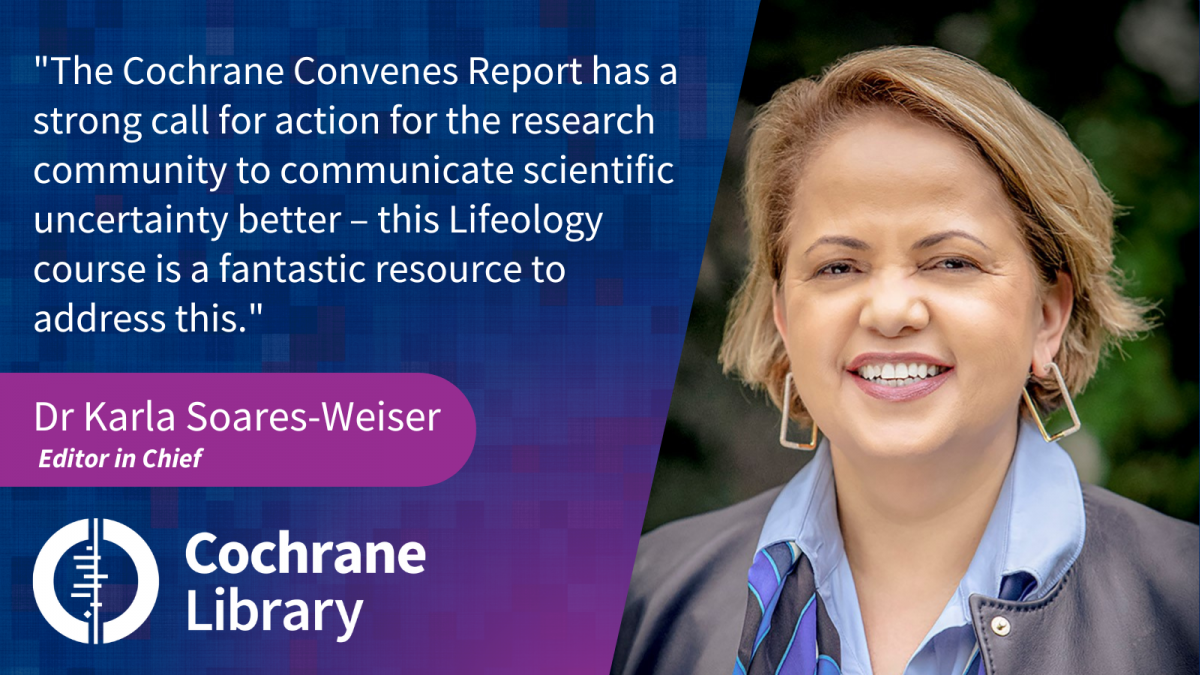
Sometimes people avoid talking about uncertainty in scientific findings…but they shouldn't! Gain insights and practical advice on how to communicate uncertainty in this free resource.
Science is complicated and inherently uncertain – it’s hard for scientists and researchers to know how to talk with diverse audiences about this. We are excited for the launch of ‘How to communicate scientific uncertainty’ – a free resource directed at communication professionals and scientists and researchers sharing their work.
Lifeology’s tagline is ‘The place where science and art converge’. They offer a platform that brings together scientists, artists, and storytellers to help people better understand and engage with science, health information, and research. One of the main ways they meet their objectives is through beautifully illustrated, evidence-informed, bite-sized ‘flashcard’ courses about science and health-related topics aimed at the general public and students.
“Drawing on experiences of the COVID-19 pandemic, Cochrane Convenes brought together leaders from across the world to explore and then recommend the changes needed in evidence synthesis to better prepare for and respond to future global health emergencies,” explains Cochrane's Editor in Chief, Dr Karla Soares-Weiser. “The Cochrane Convenes Report has a strong call for action for the research community to communicate scientific uncertainty better – this Lifeology course is a fantastic resource to address this.”

Author Nicole Kelp from Colorado State University says, “Uncertainty is complicated for all humans to handle, myself included! It was helpful to consider science communication from this empathic perspective while writing this course.” The Harding Centre for Risk Literacy reviewed a pre-final version. The course was reviewed multiple times by Muriah Umoquit, Senior Communications Officer at Cochrane.

This course has 43 cards illustrated beautifully by Jordan Hunter who uses the analogy of a Park Ranger helping people navigate the terrain with signage. “This project was a fun one to work on, “says Jordon. “The imagery in this course highlights the diversity of audiences and instead of text, I used symbols in speech bubbles so that the course can be easily translated.”
"Science communication thrives through collaboration among scientists, topic thought leaders, communication professionals, and creative visionaries like storytellers and artists," emphasized Muriah Umoquit, Senior Communications Officer at Cochrane and reviewer for this course. "It was great to join forces once again with Lifeology. This is the third collaboration with Lifeology, following the creation of the impactful resources ‘What is an infodemic and how can we prevent it?’ and ‘How to talk about vaccines when you’re not an expert’. We are thrilled to present our latest endeavor: a free resource on communicating scientific uncertainty. This invaluable resource is packed with practical advice and utilizes accessible language, empathetic storytelling, and relatable imagery. Join us and explore its enlightening content today!"
View the Lifeology course 'how to communicate scientific uncertainty' in:
Learn more about Lifeology:

